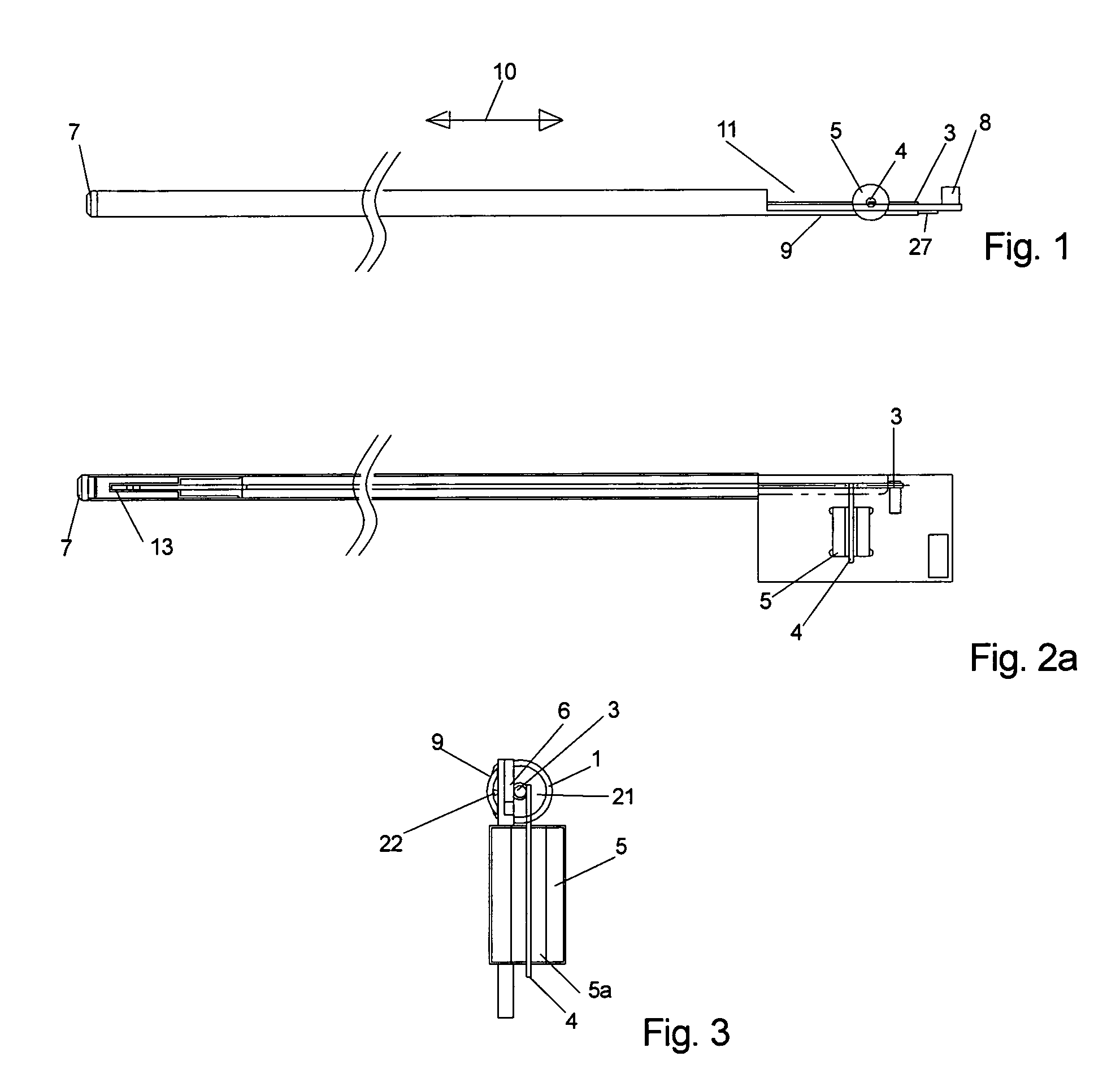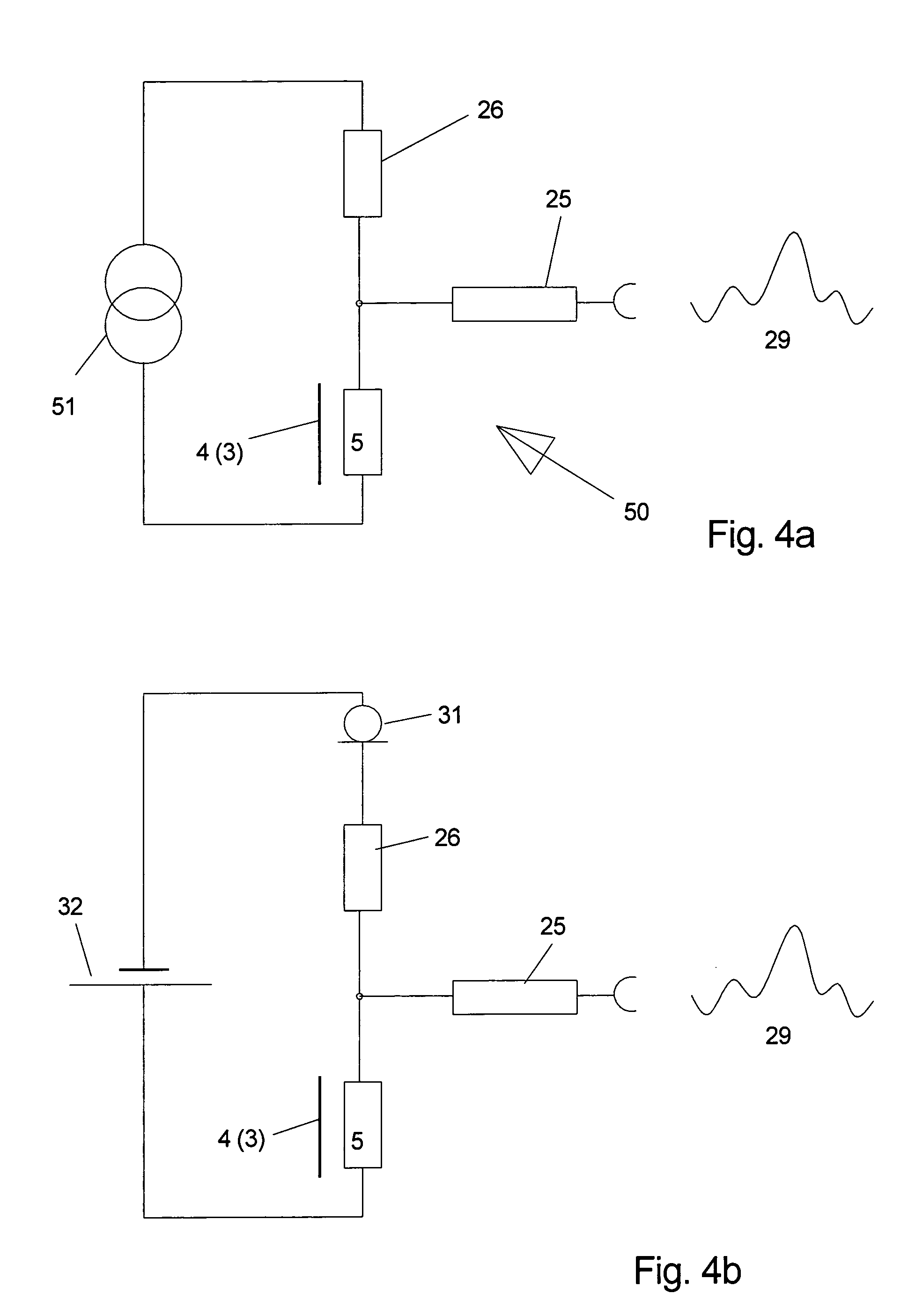Sensor according to the runtime principle with a detector unit for mechanical-elastic waves
a sensor and runtime principle technology, applied in the direction of converting sensor output using wave/particle radiation, instruments, printing, etc., can solve the problems of negative operating point change, all form deviations from normal shape, and overall length of position sensor
- Summary
- Abstract
- Description
- Claims
- Application Information
AI Technical Summary
Problems solved by technology
Method used
Image
Examples
Embodiment Construction
[0042] An embodiment in accordance with the invention is described in greater by way of example detail hereinafter, with reference to the Figures. The drawings show:
[0043]FIG. 1: a plan view on the position sensor,
[0044]FIG. 2: a side view with partially sectioned coil in accordance with FIG. 1,
[0045]FIG. 3: a front view in accordance with FIG. 1,
[0046]FIG. 4a, b: the detector coil in a series circuit,
[0047]FIG. 4c: the detector coil in a measuring bridge,
[0048]FIG. 4d: a difference amplifier for the subsequent processing of the position signal,
[0049]FIG. 5: sectional views through various detector arrangements,
[0050]FIG. 6: sectional views through a detector arrangement on the wave body,
[0051]FIG. 7: sectional views similar to line VII-VII in accordance with FIG. 3,
[0052]FIG. 8: detector arrangement with toroidal coil,
[0053]FIG. 9: further detector arrangements, and
[0054]FIG. 10a, 10b: additional detector arrangements.
[0055] The FIGS. 1 and 2 show a sensor element, in w...
PUM
 Login to View More
Login to View More Abstract
Description
Claims
Application Information
 Login to View More
Login to View More - R&D
- Intellectual Property
- Life Sciences
- Materials
- Tech Scout
- Unparalleled Data Quality
- Higher Quality Content
- 60% Fewer Hallucinations
Browse by: Latest US Patents, China's latest patents, Technical Efficacy Thesaurus, Application Domain, Technology Topic, Popular Technical Reports.
© 2025 PatSnap. All rights reserved.Legal|Privacy policy|Modern Slavery Act Transparency Statement|Sitemap|About US| Contact US: help@patsnap.com



